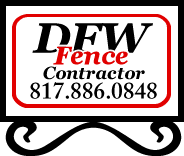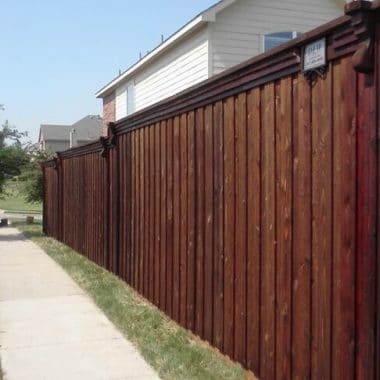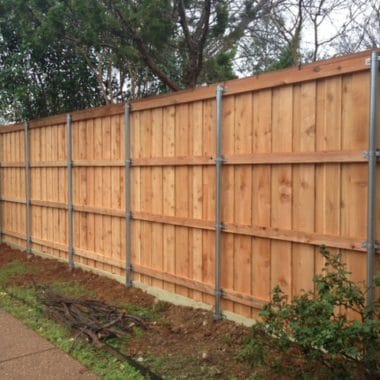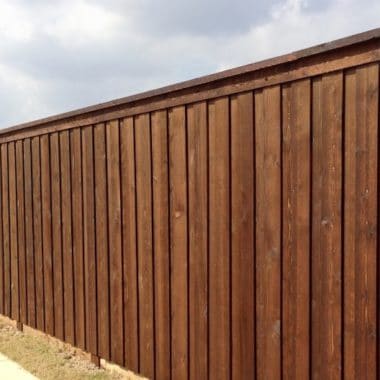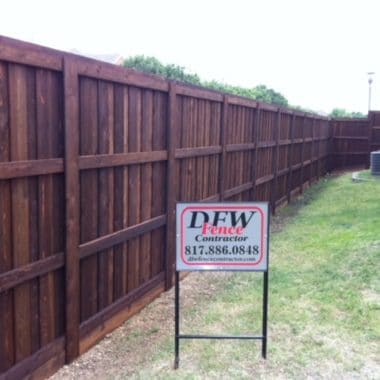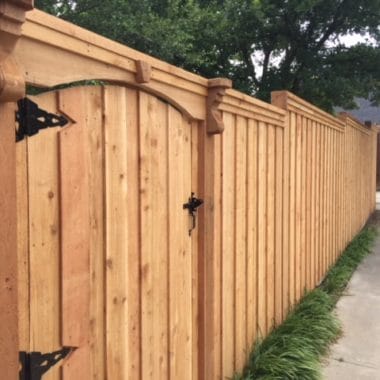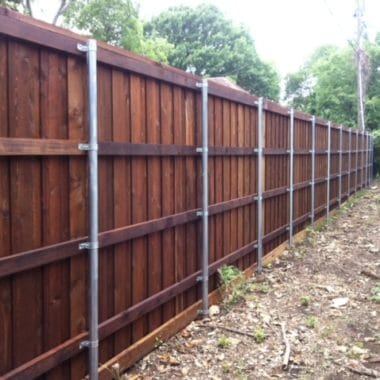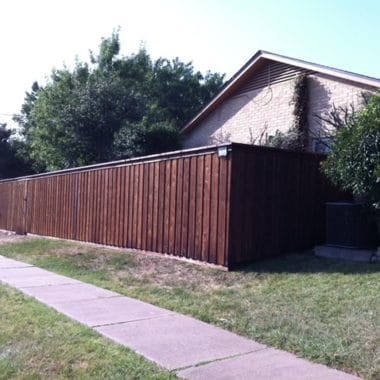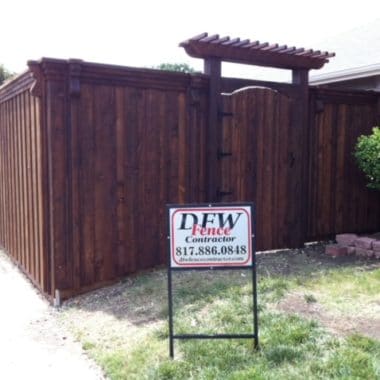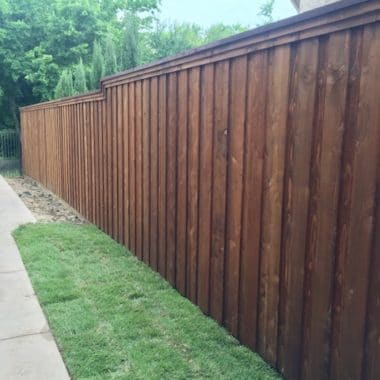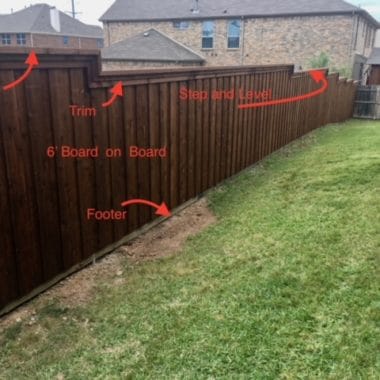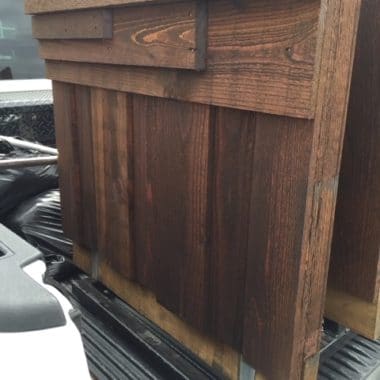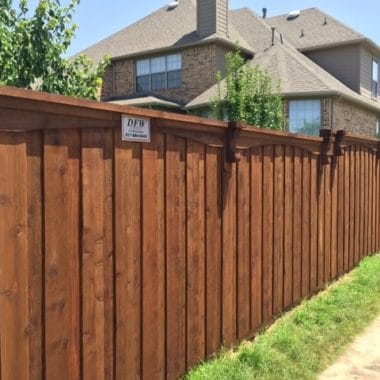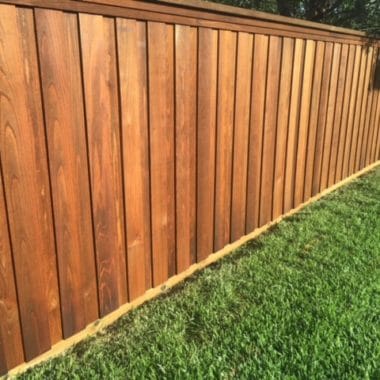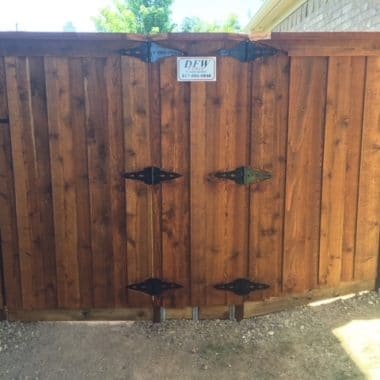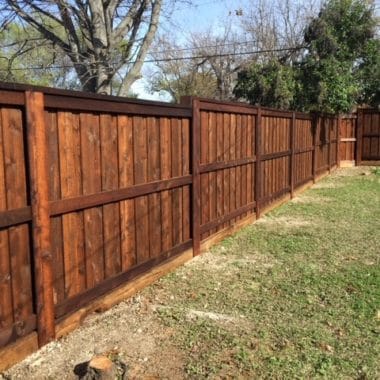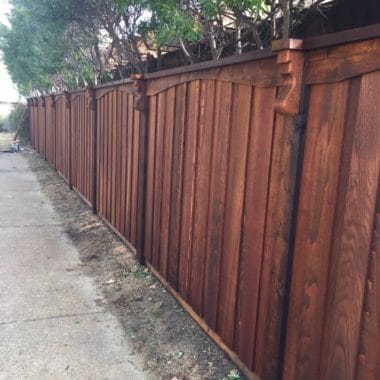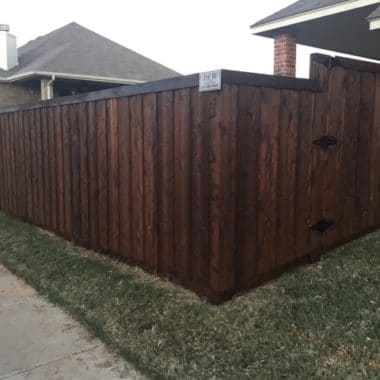What Is A Wooden Board-on-Board Fence?
If you’re in the market for a Dallas fence company, you probably have a set of priorities. Maybe you want to mark a boundary. Perhaps you want an enclosure to keep pets and children safe or a barrier to keep trespassers from entering your property. All of those options will lead you to different kinds of fencing and give you multiple options to weigh and consider when looking for a board-on-board fence near Dallas.
If you’re looking for privacy, you’re definitely looking for a board-on-board fence. It’s the ultimate choice if privacy is your top priority, but it’s important to know how board on board works, and why it works so well.
So let’s dig into the details of board-on-board fences. What follows is a quick but thorough breakdown of everything you need to know about board-on-board fencing, starting with the construction.
What Is Board-on-Board Cedar Fence Panels
Board-on-board cedar fence panels serve primarily as barriers to provide privacy, security, and aesthetic enhancement to residential or commercial properties. Their overlapping design ensures complete coverage, effectively shielding yards, gardens, or other outdoor spaces from prying eyes and external elements. These panels are commonly used to define property boundaries, deter trespassers, and create secluded outdoor environments for relaxation or recreation. Additionally, their durability and natural aesthetic make them popular choices for enhancing the overall appearance of a property while simultaneously offering practical benefits such as noise reduction and wind protection.
Top 5 Benefits of Board-on-Board Fencing
- Enhanced Privacy: Board-on-board design provides full coverage with overlapping boards, minimizing visibility through the fence.
- Durability: The overlapping structure offers added strength and stability, making the fence more resistant to strong winds and other weather conditions.
- Visual Appeal: The alternating boards create a visually appealing pattern that adds charm and character to the property.
- Noise Reduction: The dense structure of a board-on-board fence helps absorb sound, reducing noise from neighboring properties or nearby streets.
- Increased Property Value: A well-built, attractive privacy fence can enhance the value of a property by improving aesthetics and functionality, making it more appealing to potential buyers.
How a Board-on-Board Fence is Built
Board-on-board starts with a series of posts and rails, which fence post covers can cover up. This doesn’t differentiate this particular type of fencing. It’s the same starting point you’d have for a panel or picket fence, but it’s the mounting of the fence boards on both sides of the rails that starts to give you the privacy you’re after. The boards are mounted with wide gaps between them initially, but then each board is alternated to cover the gaps between boards on the opposite side of the fence board. That means there’s no longer a direct sightline, although there is an oblique view through the boards. If the terminology behind this is important to you, this is also known as a shadow box. Those overlapping pickets ensure a strong privacy fence protects your backyard. In many fence styles, wood shrinkage can cause gaps, and these gaps compromise the visual barrier the fence is supposed to provide.
The Cost of Board-on-Board Fencing in Dallas
One thing to be aware of if you choose a board-on-board fence is that it will likely cost a little more. That’s because you’re using more boards than you would in other kinds of fencing, so that’s the price you pay for the ensured security with privacy fences. Generally speaking, a stockade style fence in which the boards overlap by an inch or more will require up to 30 percent more boards. You probably won’t need any special hardware other than nails or screws, but you will have to pay more for finishing supplies to cover the extra wood.
There’s another benefit, though. Because you’re using those extra boards, you’re also creating a better wind barrier, providing the fence posts are sunk keep enough to prevent the posts from failing in windy conditions or a serious storm. To prevent this, the fence posts should be anchored to at least one-third of their overall length, and the posts should be anchored with either gravel or concrete to ensure they’ll stay up. Another issue to consider with board-on-board wood fencing is the materials. The fencing will hold up longer if it’s redwood or cedar fencing, but the posts, slats, and rails can be built using rough-sawn or smooth lumber.
Regardless of which choice you make, the posts should be pressure-treated to ensure the longevity of your board-on-board wood fence. You can add an automatic wooden driveway gate to your board-on-board fence to finish the project, and this will give you ultimate privacy.
We are DFW Fence Contractor located in Fort Worth, Texas and we provide our fence clients with excellent service and fence products. If you have any questions or want to learn more about the services we provide click here to learn more!
8 Foot Board-On-Board Fence Gallery
6 Foot Board-On-Board Fences
Need A Wooden Privacy Fence Installed Near DFW?
Here is a video from DFW Fence Contractor explaining what it’s like working with our crews. We are honest and put a ton of effort into our workmanship. Give us a call if you need a new fence built.
817-886-0848
